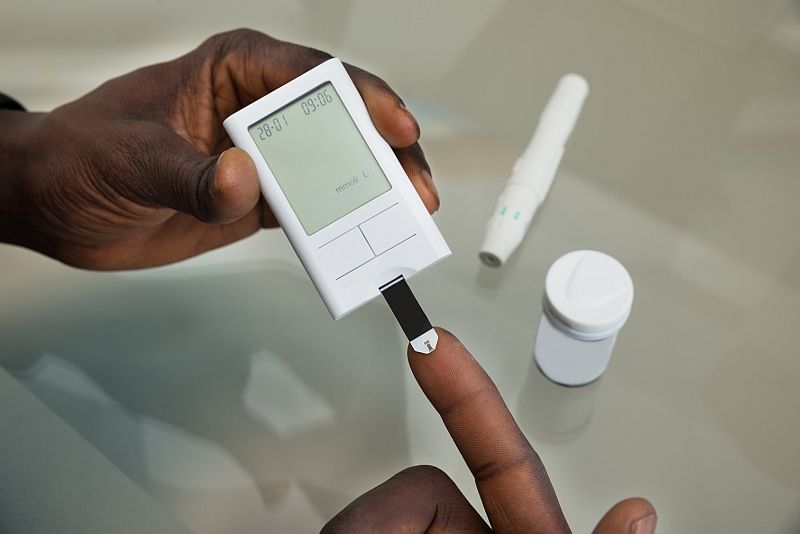WEDNESDAY, Sept. 13, 2017 (HealthDay News) — Millions of Americans with type 2 diabetes and pre-diabetes are at risk for chronic kidney disease, and another 59,000 Americans, 40 and older, are at risk for diabetes-related blindness.
That’s the sobering conclusion of new research by investigators at the U.S. Centers for Disease Control and Prevention.
The good news is that, in many cases, these complications can be reversed or their progression slowed, said Dr. Joel Zonszein. He’s director of the Clinical Diabetes Center at Montefiore Medical Center in New York City. He wasn’t involved with the new study.
“When we talk about prevention, we are really talking not about disease prevention, but rather about sustaining good quality of life by delaying more complications,” he said. “We can prevent complications by changes in lifestyle and the correct medications,” Zonszein added.
In fact, many patients with diabetes for more than 40 to 50 years have none or minimal complications and a normal lifestyle, he noted.
But the only way to prevent or slow the complications of diabetes is to diagnose them early and to aggressively control blood sugar levels, Zonszein said.
“Unfortunately, we have the other side of the coin — those uninvolved and unengaged with their disease, with untreated diabetes that go down a slippery road and go down fast, developing complications that are hard to slow down,” he explained.
“This study is a warning to people who already started having complications,” Zonszein said.
According to the report, slightly more than 30 million Americans have type 2 diabetes.
Diabetes can take a toll on the body’s circulatory system, especially the tiniest blood vessels, according to Dr. Gerald Bernstein. He’s an endocrinologist and coordinator of the Friedman Diabetes Program at Lenox Hill Hospital in New York City.
That’s why diabetes is the leading cause of kidney failure, said Bernstein. He added it’s also why chronic kidney disease is a major risk factor for serious heart disease, stroke and death.
In addition, damage to the small blood vessels in the eyes leads to a condition called diabetic retinopathy, which can eventually cause loss of sight, explained Bernstein, who also wasn’t involved in the new study
The researchers used data from the U.S. National Health and Nutrition Examination Surveys (NHANES) for 2005-2008. A team led by CDC researcher Meda Pavkov found nearly 400 adults with both diabetes and chronic kidney disease. More than 36 percent of this group also had diabetic retinopathy.
More than 8 percent had diabetic retinopathy so serious that it threatened their vision, the researchers found.
“Compared to persons without diabetic retinopathy, those with diabetic retinopathy were on average older, with higher HbA1c [a measure of blood sugar over two to three months], higher blood pressure, longer diabetes duration and had insulin treatment,” the study authors wrote.
A 1 percent increase in HbA1c led to a 50 percent higher risk of developing the diabetic eye condition, the investigators found. Additionally, every five years of living with diabetes increased the risk 40 percent.
The impact of blood pressure is smaller, the researchers said, with just a 3 percent higher risk of diabetic retinopathy for every 10 mm Hg increase in systolic pressure (the top number in a blood pressure reading).
But people taking insulin to manage their blood sugar have 13-fold increased odds of developing the diabetic eye condition, the findings showed.
“Overall, the prevalence of diabetic retinopathy was higher than in the earlier NHANES study after adjusting for age, sex, race/ethnicity, mean blood pressure and HbA1c, whereas the prevalence of vision-threatening diabetic retinopathy remained largely unchanged over time,” the researchers reported.
Bernstein said that being aware of kidney disease and diabetic retinopathy can help people remain healthy for a long time.
Diagnosing early kidney disease can be done with a simple urine test. In addition, an eye exam can find the early signs of diabetic retinopathy, he said.
“You need to have these looked at on a regular basis, especially in people who are at risk and in people who have abnormal blood sugar, even in the pre-diabetes range. They need to be regularly screened for kidney disease and diabetic retinopathy,” Bernstein said.
“When you make the investment in treating eye and kidney issues, you have a chance of protecting that patient for many years — it gives the tissue a chance to heal itself,” he added.
The report was scheduled to be presented Tuesday at the meeting of the European Association for the Study of Diabetes in Lisbon, Portugal. Findings presented at meetings are generally viewed as preliminary until they’ve been published in a peer-reviewed journal.
More information
For more about type 2 diabetes, visit the American Diabetes Association.
Copyright © 2025 HealthDay. All rights reserved.

